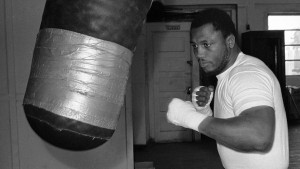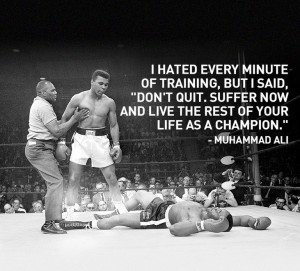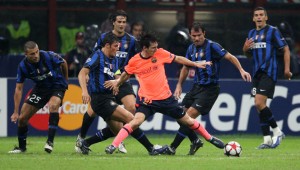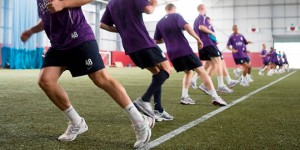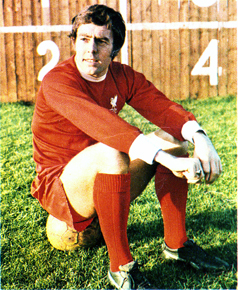By Lee Mooney and Tony McKenna.
Introduction
Given how much time I’ve spent on the ‘analysis’ of football, it seemed sensible that we start with the principle of ‘objectivity’. What we’re really talking about here, in the context of our ‘talent factory’, is the elimination (or reduction) of personal bias from four key decisions:
- allowing a player to join the development programme;
- promoting a player within the development programme;
- demoting a player within the development programme; and
- asking a player to leave the development programme.
The principle of objectivity will extend to all areas of the programme, so subsequent pieces will no-doubt call on evidence when making various suggestions. For this piece, I’m going to try and focus on the above four decisions.
The capability that will enable objectivity is the ability to accurately and consistently measure ‘performance’. But, what do you measure? How do you choose a measure without automatically injecting your own biases? Is it even possible to count reliably the things that matter most?
Simplicity is the ultimate sophistication
Like so many games, the simplicity of football on the ‘surface’ belies a significant underlying complexity. This complexity becomes most apparent when you come to analyse the game using available on-ball and geo-spatial data.
I recently embarked on a short period of ‘deep’ performance analysis. Have you ever tried swimming a long way underwater? The deepest levels of player performance analysis, combining network algorithms with geo-spatial data, often leave me feeling how I did the first time I tried to swim a length of the ‘big pool’ underwater: short of breath and a little bit dumb.
As an analyst, sometimes an appetite for complexity or discovery can get the better of you. You can forget that your job is not to be complicated – but to take something complicated, make it simple and then to articulate insights in a way that inspires an audience.
My ‘indulgence’ of complexity, much like an ‘all you can eat’ binge after a long time spent being lean and healthy, is that perhaps ‘less’ really is ‘more’. Simplicity is the ultimate sophistication (as far as Da Vinci was apparently concerned). Careful subtraction, rather than proliferation then, can be a perfectly valid path to real insight – (I personally feel people are at their most creative and inventive when faced with a scarcity of resources).
What is the most complex ‘variable’ in the analysis of football and what would football be without it? Personally, I find the most complex variable, by far, to be the ‘dynamic network’.
A football match is a dynamic network of communicating ‘nodes’ that constantly move, re-purpose themselves and offer varying degrees of ‘efficiency’ as they perform the responsibilities of the role they’re in at the time. Reflecting this complexity when collecting data, and then handling that data in-order to create something useful, is not easy. All football analysis then will require some degree of abstraction, simplification or assumption. When people present insights without supporting caveats it’s now a big clue to me that something is ‘not quite right’ (be that with the work itself or the ‘politics’ surrounding it).
Tony McKenna offers a great example from the general theory of relativity (E = mc2):
“He [Einstein] ignored infinitely many nonlinear or `higher order` terms on one side of the equation. Einstein arrived at the lone linear term by neglecting magnitudes of fourth and higher orders. The real equation reads e = mc squared + infinitely many terms. ” (Fuzzy Thinking – Bart Kosko – page 107).
Einstein did not actually think that nature was linear; but he created a linear equation as an approximation; just because it was easier. The c squared is actually a constant; in reality, there are infinite variables that apply. We all share the same inclination of a revered genius: he linearized his subject to simplify the task. But this should not be taken as the same as believing the world to be linear.
Football without network complexity is just boxing
When you strip the complex ‘dynamic network’ elements away from football, what you’re left with is the sport of ‘boxing’.
“You can map out a fight plan or a life plan, but when the action starts, it may not go the way you planned, and you’re down to your reflexes – that means your preparation. That’s where your roadwork shows. If you cheated on that in the dark of the morning, well, you’re going to get found out now, under the bright lights.” – Joe Frazier
Boxing and football share many similarities. Boxing also provides a rich palette of examples from which we can draw inspiration. The key thing to surface first is the difference between ‘punching’ and ‘boxing’.
Many fans see football like ‘punching’. They judge performance on the ‘big shots’ or ‘big tackles’ or ‘long-range passes’. Boxers, by contrast, are acutely aware that even the weakest opponent has the potential to knock them out. A boxing match, for the want of better words, is really about stamina, real-time analysis, decision-making and the execution of skills within the confines of time and space.
Boxers use their jab to probe an opponent to see what kind of reactions they get. They use angles and movement to see where the opponent moves most comfortably and where they are awkward. Boxers look to find defensive gaps that are likely to grow as fatigue sets in – they create, exploit and defend space whilst carefully managing their energy and the accumulation of damage. Boxing is a mind game built on a platform of stamina, strength and technique – it is about reading the ‘holes’ and filling them with high quality ‘shots’…sound familiar?
Keep your hands up! The very first lesson in boxing is to instil the basest form of defence – to block attacks by putting things in the way of incoming threats – to maintain a solid defensive ‘cage’ at all times – only breaking it temporarily to launch attacks.
“The highest form of defence (and also the hardest to develop) is to be so slippery, so elusive, and so evasive that your opponent feels he might as well be punching a puff of smoke”. (Mark Hatmaker, Boxer’s Bible of Counterpunching: The Killer Response to Any Attack)
Slippery, evasive and elusive…sounds like the perfect execution of the high-pressure high-possession game to me. Evasion is about mobility, balance and finely tuned levels of technical ability – the kind that enables fighters to execute skills right ‘on the edge’ of potential knockout blows, constantly leaving opponents chasing shadows. It brings to mind one of founding principles of the early Liverpool sides – to be fit enough to “run teams to death” in both defence and attack. It also made me think of how Barcelona move the ball so freely in tight spaces.
The stamina expectations at Liverpool prior to 1983 were incredibly high. Experienced professionals could take up to a year of focussed development within the reserve system to achieve the levels expected of Liverpool first team squad).
Looking at performance analysis through a new lens
When you think about the content above, about the description of the behaviours that ‘matter most’ in boxing, how would you analyse it if offered a blank slate and no constraints? Would you count punches? Without the context of the boxer’s intentions, and an ‘expert’ perspective on his viable options at the time, how could you possibly say if an action was ‘right’ or ‘wrong’?
Football is the same, after all: “it’s not about the short ball or the long ball – it’s about the right ball”. On-ball event data, even when you include geo-spatial enrichment, simply cannot articulate the ‘context’ surrounding the individual event.
For example, a pass can be ‘completed’ in the final third, but was it the ‘right’ pass given the options available? When a pass doesn’t complete – is this due to the ‘giver’ (hospital pass) or the ‘receiver’ (slow to react, poor control)? If a pass is played behind a team-mate, and they have to check their run which allows defenders to recover, that’s still a completed pass – but what that pass ‘could’ or ‘should’ have been is very different to what it actually ended up being.
The ‘fanalyst’ community can drain every last drop of value out of this on-ball event data – and is well on the way to doing so – but the data will never yield insights that it does not have.
Learning from boxing, football is really a game of decision-making and the execution of skill given available space and time. More specifically: creating space and time for your team-mates to make choices and execute skills, and denying space and time for your rivals to do the same. The specifics of this will vary based on the ‘importance’ of different areas of the field, the roles specific players are playing and their ‘quality’ in those roles. Each of these terms: ‘important areas’, ‘roles’ and ‘quality’ also need to be defined (and may need to be re-defined specifically given the opponent you’re up against or the resources you’re likely to have when facing that opponent).
For example, different players can hurt you from different areas of the field – some players can also do it with far less time and space than others. What’s interesting then – when it comes to measuring a player’s quality – is their ability to execute the skills of their role, and make decisions, relative to the time and space they have available. The best players will execute well, and make better choices, with less time and space.
What we are moving towards here, logically, is a set of metrics based on the proximity players have to each other and to the ball. This would account for much more of what is happening in a game and provide a richer source of data to inform pre-match and post-match analysis.
As an example: how much of Claude Makelele’s game was about getting into the optimum position to minimise an opponent’s ability to execute skills and make choices – sometimes without even touching the ball himself?
Another interesting example would be Gareth Bale. Because of his acceleration, speed and ability to strike from distance – you might decide that pressing him far higher up the pitch, and far harder, is a worthwhile investment of energy. You might allow other opponents to get much closer to your goal, and choose to sacrifice possession, in-exchange for a ‘tighter’ defensive unit. So, these ‘movement and proximity’ metrics could become very powerful when it comes to managing energy.
Practically, martialling the raw data that would enable these kinds of metrics is no small challenge. We’re talking about millions of geo-spatial records being generated to describe a single game. Building a sufficient ‘sample’ of data to create benchmarks and ‘reference points’ would require real investments of time, talent and technology.
The dilemma of objectivity in practice
Our ‘talent factory’ should be objective. Solid facts should underpin decisions about who joins, who is promoted, who is demoted and who leaves. However, everything written here so far suggests that achieving this is actually quite hard (thanks again to Tony for further corroborating evidence):
“Yet we tend to underestimate the contribution of randomness to sporting success. In the 1980s statisticians started to analyse scoring patterns of basketball players. They were stunned to find that it was completely random whether or not a particular player made or missed a chance.” (From: Alex`s Adventures In Numberland by Alex Bellos).
Bellos admits that some players will prove better than others; but, ultimately, even the best cannot harness accuracy to their will; and regression to the mean will loom at points – this applies to say, even a player who scores an average of 1 in 2 games; importantly, this is a mean average and not to say he actually scores every 2 games.
Any testing system looking to measure skills is unlikely, purely down to practical reasons, to capture sufficient measurements to account for ‘luck on the day’ (be that good or bad). We also need to be aware of the ‘regression to the mean’ problem. Overall, this means any selection system will undoubtedly create an unknown number of ‘false positives’ and ‘false negatives’ (i.e. some people will ‘pass’ because they were lucky, others will ‘fail’ because they were unlucky).
So, how might we practically operate a measure of a player’s ability to execute the skills of their role, and make decisions, relative to the time and space they have available?
To start, given that our programme is open to anybody, we might want to build a simple initial filter of the talent pool. The rationale here being that the kind of measuring we’re leaning towards is unlikely to be viable when presented with large numbers of people.
The procedures for measuring cardio-vascular and muscular endurance are relatively simple. Could the first phase of ‘player selection’ be a test of these attributes? For example, any player wishing to join the development programme must first achieve level X on the VO2-max ‘bleep test’. This would be a relatively low-cost way of filtering the talent pool to a more manageable level.
The journey towards the required levels of endurance might also help to identify individuals with the right ‘character’. The key point is that expectations can be managed on all sides, “to get X, you need to achieve Y – and here’s the guidance on how to do it”.
One testing system that I have read about, which also covers all aspects of our definition, was a Shankly invention called the ‘sweat box’. In typical ‘old Liverpool’ fashion, there was nothing ‘flash’ about this apparatus. Two boards, slightly smaller than goals, at either end of a 20-yard section of grass. Both boards had numbered sections. Players would run with the ball towards a board and strike at a numbered section called out by the staff. They would then control the rebound, turn and then repeat – all done against the clock. Lasting a certain number of minutes signified readiness for a place in the first team. Could this basic procedure be adapted to create the data needed to make objective decisions?
What if those boards were interactive and presented multiple options with different ‘values’ (did you ever play ‘duck hunt’ on the Nintendo?). Those options could be static, but they could also move. Each board could even present a live scenario. You could be attacking the Kop goal and have to choose to pass to a player or shoot – depending on the position of the opponent. What an interesting way to measure skill and decision-making. Fit a heart-rate monitor and you’ll also know all you need to about fatigue and work-rate. Make the exercise last for a set time and you have a controlled environment that can be re-created and a basis for ranking candidates given the score they achieve in a set time. Add simple sensors to the ball and player’s boots and you have the means to assess a player’s dexterity. Bring all that together and you have a simple assessment that could drive objective decisions and the provision of quality feedback. Annoyingly, it turns out that someone has already built it! Thanks To Daniel Rhodes for introducing me to ‘Footbonaut’ during the review of this piece. The picture below is the very machine in-action at Borussia Dortmund (of all places):
Conclusions
The goal of this exercise was to inform the design of our ‘talent factory’. Specifically, to propose a practical mechanism for eliminating (or reducing) personal bias from selection, promotion, demotion and rejection decisions.
The destination of this thinking has been to recommend two components for the design:
- a basic test of cardiovascular endurance, such as the VO2 max bleep-test
- to resurrect, and re-boot with data, the Shankly ‘sweat box’ apparatus
This latter point is enormously interesting. To have an objective mechanism that creates a ‘gate’ into professional football could offer a fantastic stimulus. If you wanted to become a footballer today, how would you do it? An openly provided ‘gate’, supported by quality training material, is some contrast to that. I feel it would reduce the role of ‘luck’ in today’s system and instead place responsibility firmly in the hands of practice and commitment.


